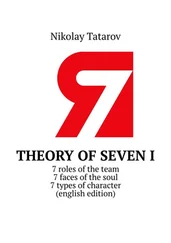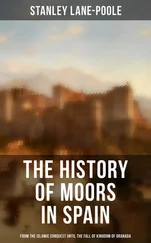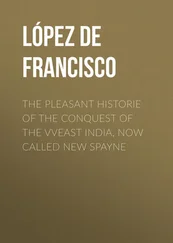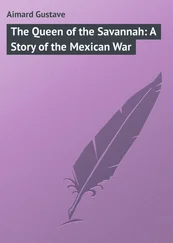IN MARCH OF 1521, Magellan sights the islands. At first, his hands clawed around a telescope, he thinks Saipan to be a sleeping monster. Who else would inhabit this liquid hell where no breeze blows? The crew is starving, eating leather straps and sawdust, hunting rats through the dark, rotting carcass of the ship. They have survived fourteen months of hardship and a mutiny; here, on this sheet of glass that Magellan has called “Mar Pacifico,” they fear that they will meet their maker, or the devil himself. The crew has wondered at Magellan’s defiant health. They call him “Spawn of Satan” and point to his clubfoot as proof. For someone whose progress on land is slow and labored, Magellan has no equal on the water. He lowers his telescope and blinks, then raises the telescope to the horizon again. The pope has divided the earth in two. The East has been given to the Portuguese, the West to the Spaniards, and he, a Portuguese, is sailing in the name of Spain. He will learn that the West never stops, keeps winding round and round, and the earth belongs to whoever is strong enough to take it.
Magellan’s ships, the Trinidad and the Victoria , draw closer to Saipan.
In the distance, Magellan can make out flat white planes — triangles — shifting across the surface of the water. Could this be the sun refracting, coursing to the left, then right, drawing closer then angling quickly away? Could this be his mind, at last succumbing to his strange diet of leather and rat meat? Maybe these shifting sheets are from the past, a pleasant image heralding his death, because these are sails and the darting movements are boats gliding over the glassy surface of the sea. Sails. As a youth he had owned a small skiff. At the edge of the world, has he encountered the past? Has he wound back to 1495, when, as a youth, boats had been a joy and diversion?
The men are loud, spirited. Their joyful shouting is a strange sound. They have been silent for so long. Magellan is not being lured into the past, nor is he hallucinating. They have reached land and the sails belong to the fishing boats of Chamorro natives. Magellan closes his eyes, confident that when he opens them again he will see his sleeping monsters revealed as islands. Soon he will be navigating his way into the shallows, looking for a place to anchor.
Despite the welcome relief of food and water, there is not much to recommend Saipan. Even the Chamorros are supposed to have been stranded there on a canoe trip from Indonesia, their landing an accident of poor navigation, their decision to remain a mystery. Magellan names the islands “Islas de las Velas Latinos” because of the triangular shape of the Chamorro sails. Magellan registers Saipan in history, much as three billion years earlier, the island registered itself on the surface of the Pacific.
In the seventeenth century the islands are renamed the Marianas after an Austrian princess. The native population is all but wiped out by the Spaniards. Beyond this naming and slaying, there is nothing remarkable about the Spanish occupation of Saipan. In 1899, Spain, facing bankruptcy, sells the Marianas to Germany for four and a half million dollars. The Germans are getting a bargain. They see the value of these desolate islands strung across the Pacific, hard pebbles scrubbed by salt waves. Guam. Tinian. And Saipan. Isolated. Ignored. Saipan’s very value is that it is nowhere. Saipan interrupts. It is not the Pacific.
There is much use for something that is Not The Pacific.
Saipan is an island of foreign aggressors, warriors wanting something better, a refueling stop on the way to what is worthy of conquering. The Germans show their hand in the Great War and, after years of battering Europe, lose Saipan (a slap on the wrist), and before Saipan can be allocated to some other deserving European, Japan has claimed it. Japan, the gnat, the least worthy member of the League of Nations, is also looking to conquer. The Meiji Diet has its eyes fixed on China. As a result, in the early years of the twentieth century Saipan is outfitted with a sugar refinery and a fishing fleet staffed with Japanese and Korean labor. These two industries support a significant civilian population. Sharp spears of sugar cane bristle on the island’s back and the natives are armed with nothing more than the broad blades of industry. The fish bubble up from the depths and are netted. Women bear children. Tidy huts are erected beneath the shade of palms bordering the sandy, swept grid of streets.
In the late thirties, Japan refuses America access to the Marianas. A fortress like none that has ever been known is being constructed. One forward-thinking Japanese writer, Kinoaki Matsuo, writes, “The islands are scattered like stars across the routes of the United States Navy either perpendicularly or horizontally. It will be impossible for the U.S. Fleet to reach her destination.” One thousand islands scattered like beads across the Pacific combine to create a fortress calculated to stymie the American fleet. But what is the assumed origin of the U.S. Navy? What is the destination that will lure its shining ships through this net?
What is Japan planning?
On the first of June, 1937, Amelia Earhart and her navigator, Fredrick Noonan, take off from Miami, the first of many departures on their epic journey. Earhart is to be the first woman to circumnavigate the globe, the first aviator to do so at the earth’s waist. Their plane is a modified Lockheed Electra 10E. The airplane has recently been rebuilt after a botched landing on Luke Field near Pearl Harbor during her first attempt at the globe. This is an omen. Earhart has now decided to go east rather than west. She feels the need to make the trip, but admits that she hopes it is her last journey. She refers to the circumnavigation as a “stunt.” Her husband, the publisher George Palmer Putnam, is priming his great printing machines for the journey’s completion and has arranged for his wife to write a series of articles for the Herald Tribune to be cabled from her various destinations. Earhart perseveres. She breaks a record: first aviator to fly from the Red Sea to India. She plows on. Rangoon. Bangkok. Singapore. Bandoeng. In Bandoeng, she is forced to her bed as a result of dysentery contracted in India. She lies for days sweating, exhausted. On June 27, Earhart rises from her bed. She slides her feet into her stout moccasins, rakes her hands through her hair. The mirror reveals her as a middle-aged woman in need of a vacation, not the stout-willed aviatrix she has come to rely on. Her jacket weighs heavily on her shoulders.
In Darwin she carefully packs the parachutes to be sent back to the United States. She wryly remarks to Noonan that they will be no use over the Pacific. Noonan agrees. They need more room for fuel. Coordinates of the Pacific Islands are not reliable, nor is the weather, worrisome for Noonan. He has been groping through the skies using celestial navigation. Cloud cover confuses and extra fuel is necessary to right mistakes. Noonan announces this loudly, which amuses Earhart. She knows what the extra fuel is for, what the secondary purpose of their journey is. The Electra screams off the runway bound for Lae, New Guinea.
On Lae, Earhart writes her last article for the Herald Tribune . Pictures taken show her to be sickly and tired. These glossy pictures will be bound within Last Flight , the rotted pit at the heart of the book. The stage is set for the ill-fated leg of the journey. She has traveled twenty-two thousand miles and has seven thousand left to complete the circumnavigation. Her destination is Howland Island, a speck in the ocean, with an elevation of less than ten feet. The Coast Guard cutter Itasca is positioned off Howland Island to act as radio contact. Radio communications in the area are poor and the Itasca has been flooded with commercial radio traffic connected with the record-breaking aviatrix. At 00:00 Greenwich Mean Time, the Electra soars upward.
Читать дальше












